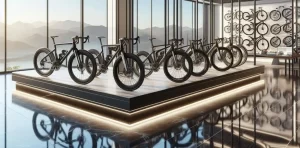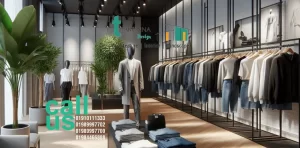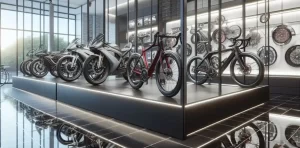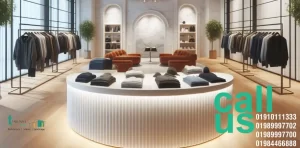
Showroom interior design plays a crucial role in shaping the customer experience and influencing purchase decisions. An effectively designed showroom not only showcases products attractively but also enhances the overall brand perception. This guide delves into various types of showroom interior design, offering insights and tips for creating appealing and functional spaces.
The Importance of Showroom Interior Design
Enhancing Customer Experience
 A well-designed showroom captivates visitors, making their shopping experience enjoyable and memorable. It allows customers to interact with products, understand their features, and make informed decisions.
A well-designed showroom captivates visitors, making their shopping experience enjoyable and memorable. It allows customers to interact with products, understand their features, and make informed decisions.
Boosting Sales
Strategic showroom design can significantly impact sales by guiding customers through the space in a way that highlights key products and promotions. Thoughtful layouts and displays can entice impulse purchases and upsell opportunities.
Reflecting Brand Identity
 Your showroom’s interior design should align with your brand’s identity. Consistent use of colors, materials, and themes helps reinforce brand recognition and loyalty.Ensuring that your showroom’s interior design harmonizes with your brand’s identity is paramount. By maintaining consistency in the choice of colors, materials, and themes, you not only create a visually appealing space but also strengthen brand recognition and foster customer loyalty. A cohesive design language throughout the showroom communicates professionalism and attention to detail, leaving a lasting impression on visitors. From the moment customers step inside, they should feel immersed in your brand’s story and values, enhancing their overall shopping experience. Invest in a thoughtfully curated interior design that reflects the essence of your brand, and watch as it becomes a powerful tool for attracting and retaining customers.
Your showroom’s interior design should align with your brand’s identity. Consistent use of colors, materials, and themes helps reinforce brand recognition and loyalty.Ensuring that your showroom’s interior design harmonizes with your brand’s identity is paramount. By maintaining consistency in the choice of colors, materials, and themes, you not only create a visually appealing space but also strengthen brand recognition and foster customer loyalty. A cohesive design language throughout the showroom communicates professionalism and attention to detail, leaving a lasting impression on visitors. From the moment customers step inside, they should feel immersed in your brand’s story and values, enhancing their overall shopping experience. Invest in a thoughtfully curated interior design that reflects the essence of your brand, and watch as it becomes a powerful tool for attracting and retaining customers.
Types of Showroom Interior Design
 Apparel Showroom Interior Design
Apparel Showroom Interior Design
Creating a Visual Journey
In an apparel showroom, the layout should create a visual journey, guiding customers through different collections. Use mannequins, displays, and themed sections to highlight seasonal trends and new arrivals.
Lighting and Ambiance
 Lighting plays a vital role in an apparel showroom. Soft, focused lighting enhances the appearance of fabrics and colors. Ambient lighting creates a welcoming atmosphere, encouraging customers to spend more time exploring.
Lighting plays a vital role in an apparel showroom. Soft, focused lighting enhances the appearance of fabrics and colors. Ambient lighting creates a welcoming atmosphere, encouraging customers to spend more time exploring.
Electronic Showroom Interior Design
Interactive Displays
Electronic showrooms benefit from interactive displays where customers can experience products firsthand. Demo stations and touchscreens allow visitors to test features and functionalities.
Sleek and Modern Aesthetics
A sleek, modern aesthetic with clean lines and minimalist decor reflects the technological nature of electronic products. Use neutral colors with occasional pops of bright hues to draw attention to key products.
Bike and Cycle Showroom Interior Design

Showcasing Versatility
For bike and cycle showrooms, it’s important to showcase the versatility of products. Create sections for different types of bikes—mountain, road, hybrid—and highlight accessories and gear.
Spatial Planning
Ensure there’s ample space for customers to walk around and inspect bikes. Use racks and stands to display bikes at eye level, making them easily accessible for closer inspection.
Cosmetic Showroom Interior Design
Luxurious and Inviting Atmosphere
Cosmetic showrooms should exude luxury and sophistication. Use plush furnishings, elegant displays, and soft lighting to create an inviting atmosphere.
Product Accessibility
Organize products in a way that makes them easily accessible. Use mirrored displays and testers to encourage customers to try products before purchasing.
Furniture and Home Decor Showroom Interior Design
Creating Home-like Settings
Furniture and home decor showrooms benefit from creating home-like settings. Arrange furniture and decor items in room setups to give customers a visual idea of how they can be used in their own homes.
Functional Layout
Ensure a functional layout that allows easy movement and viewing of products from different angles. Use a mix of lighting to highlight textures, colors, and features of furniture pieces.
Regional Focus: Interior Design Showrooms in Bangladesh
Adapting to Local Preferences
In Bangladesh, interior design showrooms should adapt to local preferences and cultural nuances. Incorporate elements that resonate with the local market, such as feng shui principles or popular color schemes.
Urban and Compact Design
Given Singapore’s urban environment, showrooms should optimize space efficiently. Use multi-functional furniture and smart storage solutions to demonstrate how to make the most of compact living spaces.
Practical Tips for Effective Showroom Interior Design
Understanding Your Target Audience
Know your target audience and design your showroom to meet their expectations and preferences. Consider factors like age, lifestyle, and purchasing behavior.
Strategic Product Placement
Place high-demand and high-margin products at eye level and in prominent locations. Use end caps and focal points to draw attention to featured items.
Incorporating Technology
Use technology to enhance the showroom experience. Interactive kiosks, virtual reality displays, and augmented reality apps can provide additional product information and immersive experiences.
Creating a Cohesive Theme
Ensure a cohesive theme throughout the showroom that aligns with your brand identity. Consistent use of colors, materials, and decor elements creates a harmonious and professional look.
Lighting and Color Schemes
Choose lighting and color schemes that enhance the appearance of your products. Use natural lighting where possible and complement it with artificial lighting to create the desired ambiance.
Maintaining Cleanliness and Organization
A clean, well-organized showroom is essential for creating a positive customer experience. Regularly tidy up displays, restock products, and ensure all areas are well-maintained.
Conclusion
Showroom interior design is a vital aspect of retail success, influencing customer perceptions and driving sales. Whether you’re designing an apparel showroom, an electronic showroom, or any other type, focus on creating a visually appealing, functional, and brand-consistent space. By understanding your target audience, strategically placing products, and incorporating technology, you can create a showroom that not only attracts but also retains customers, fostering long-term loyalty and success.

 Apparel Showroom Interior Design
Apparel Showroom Interior Design